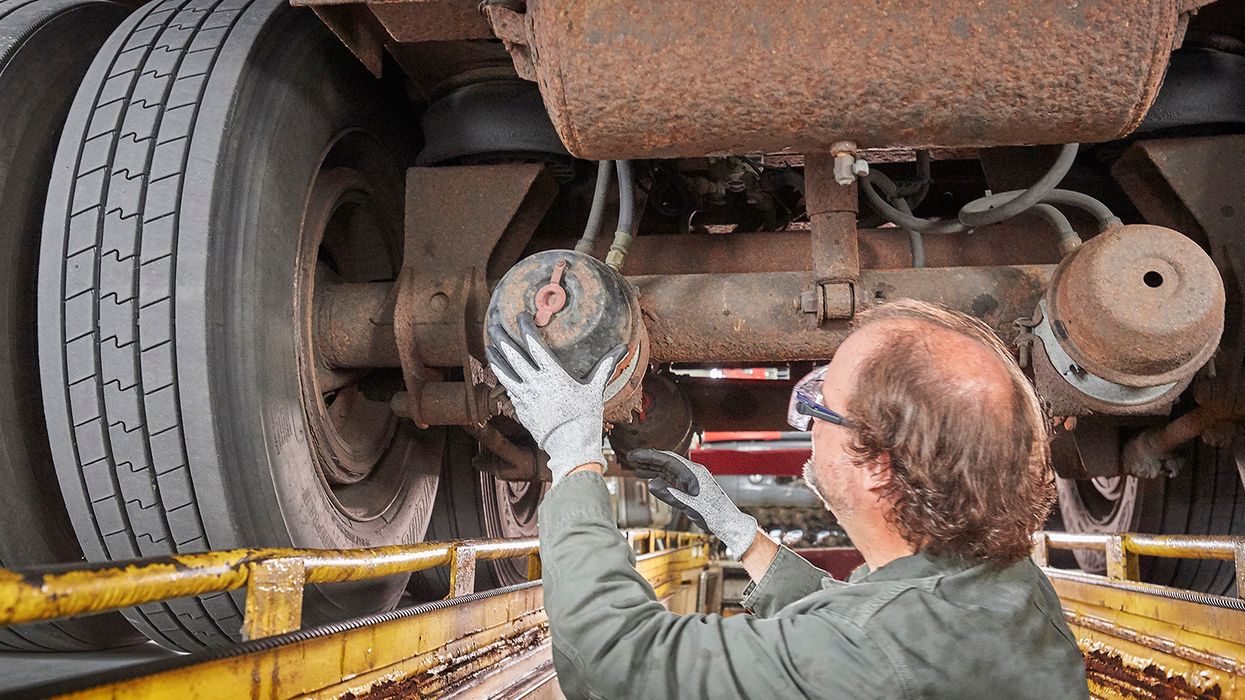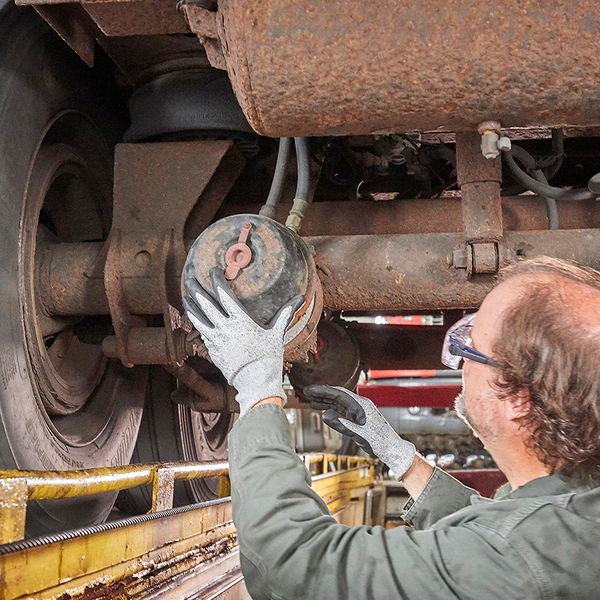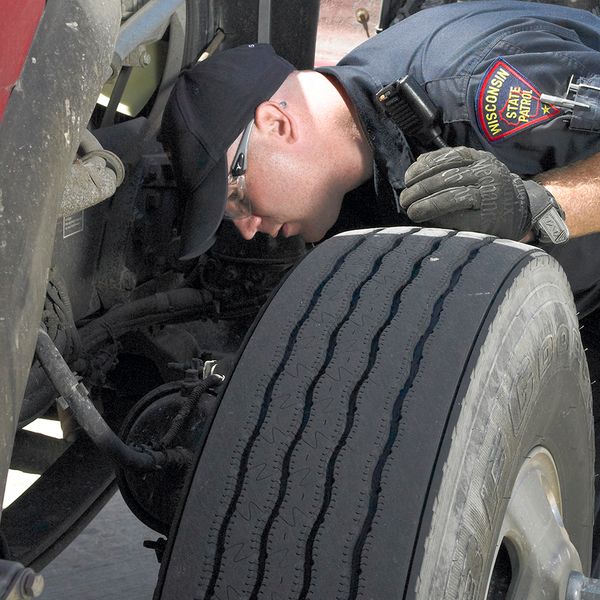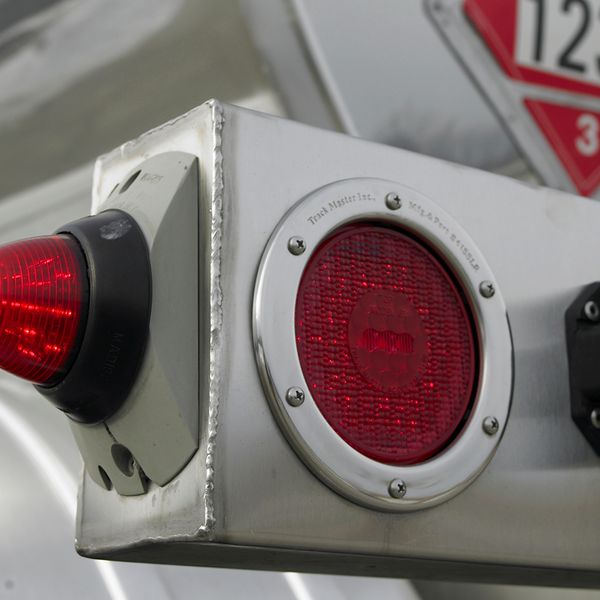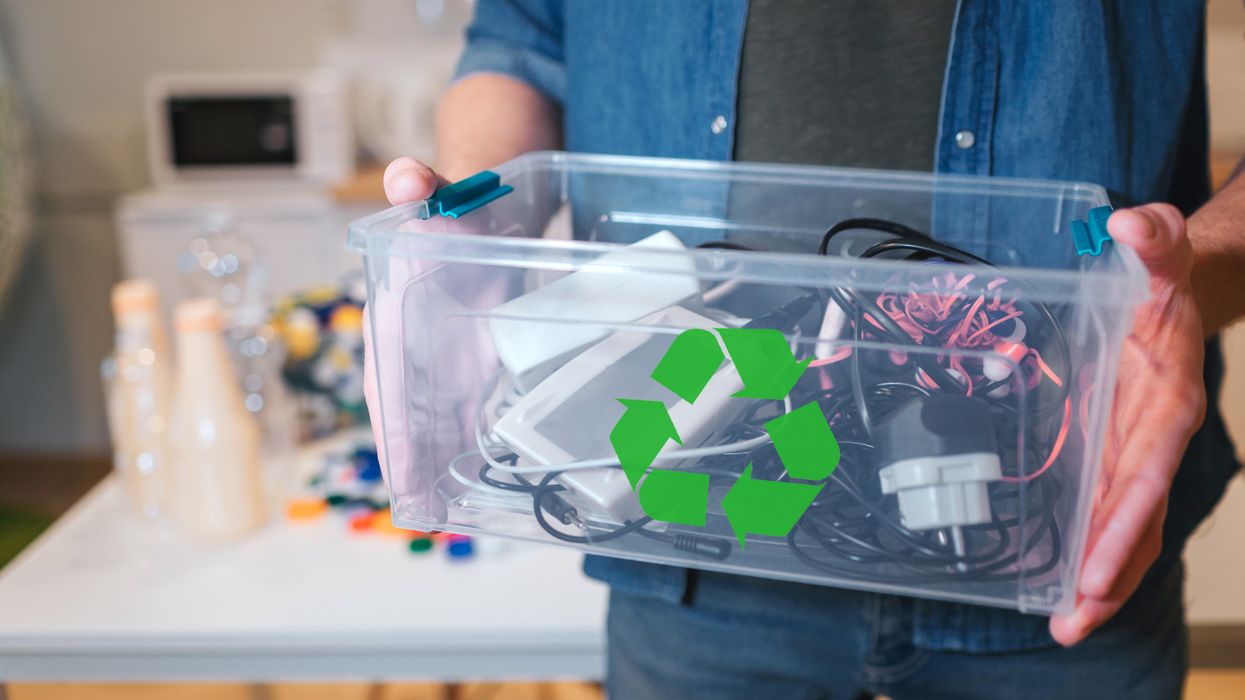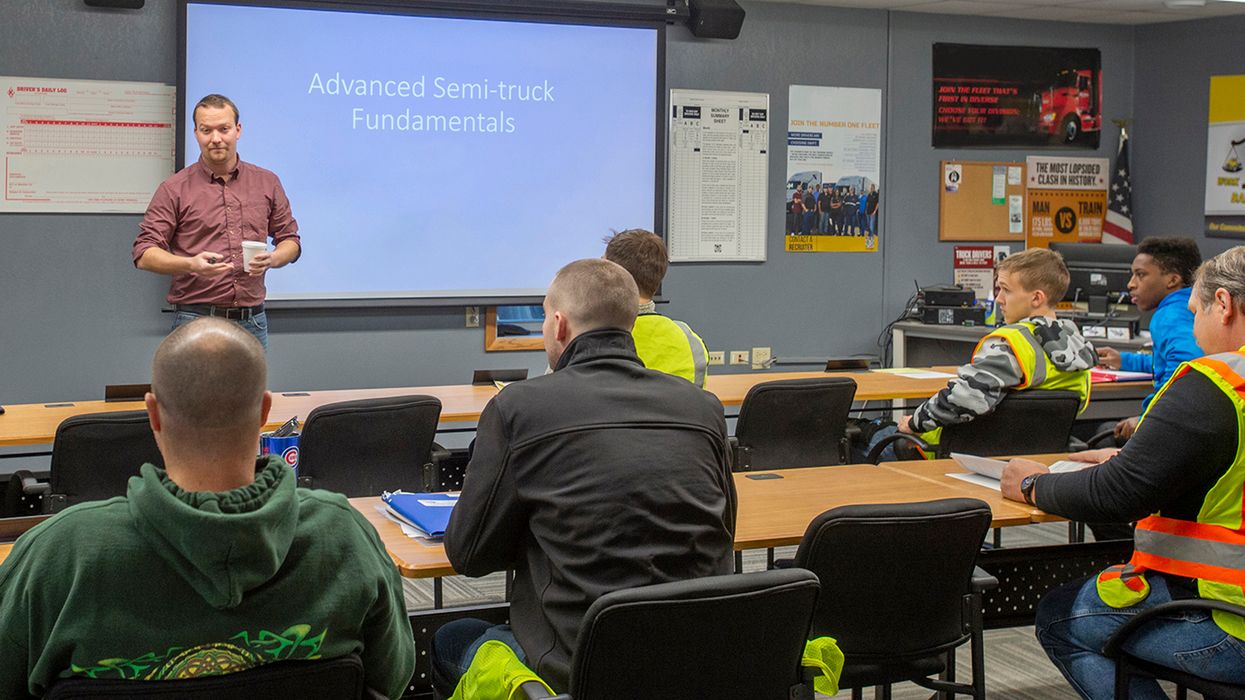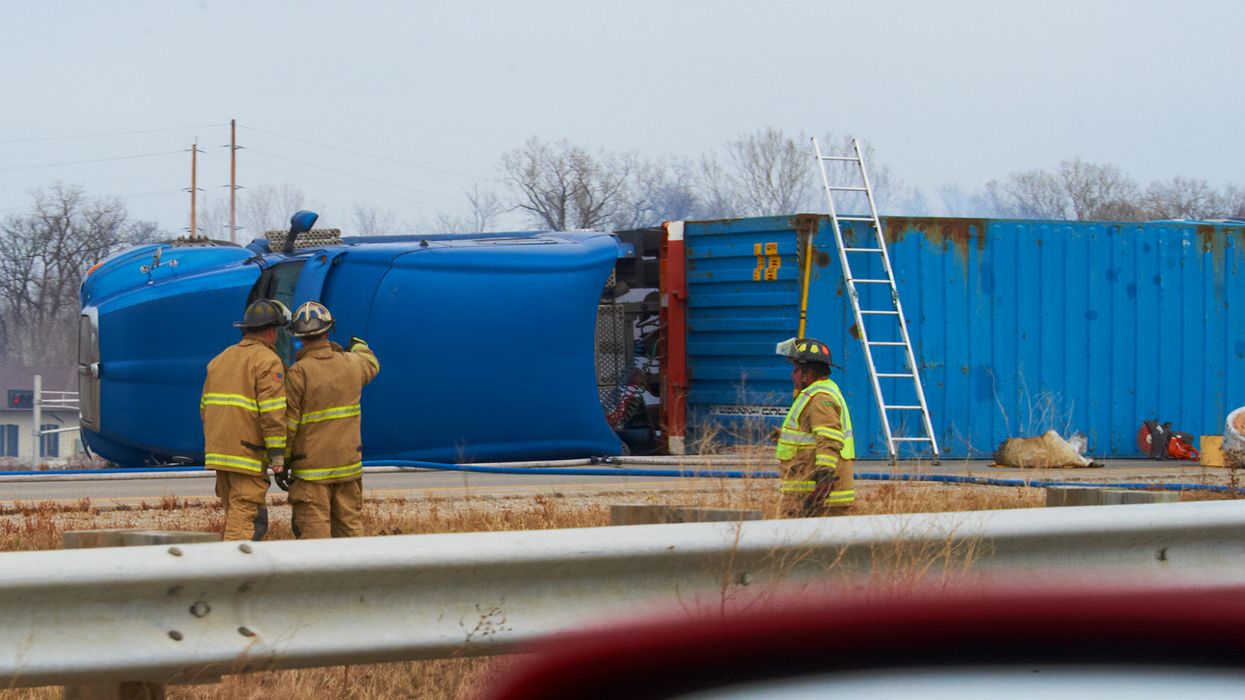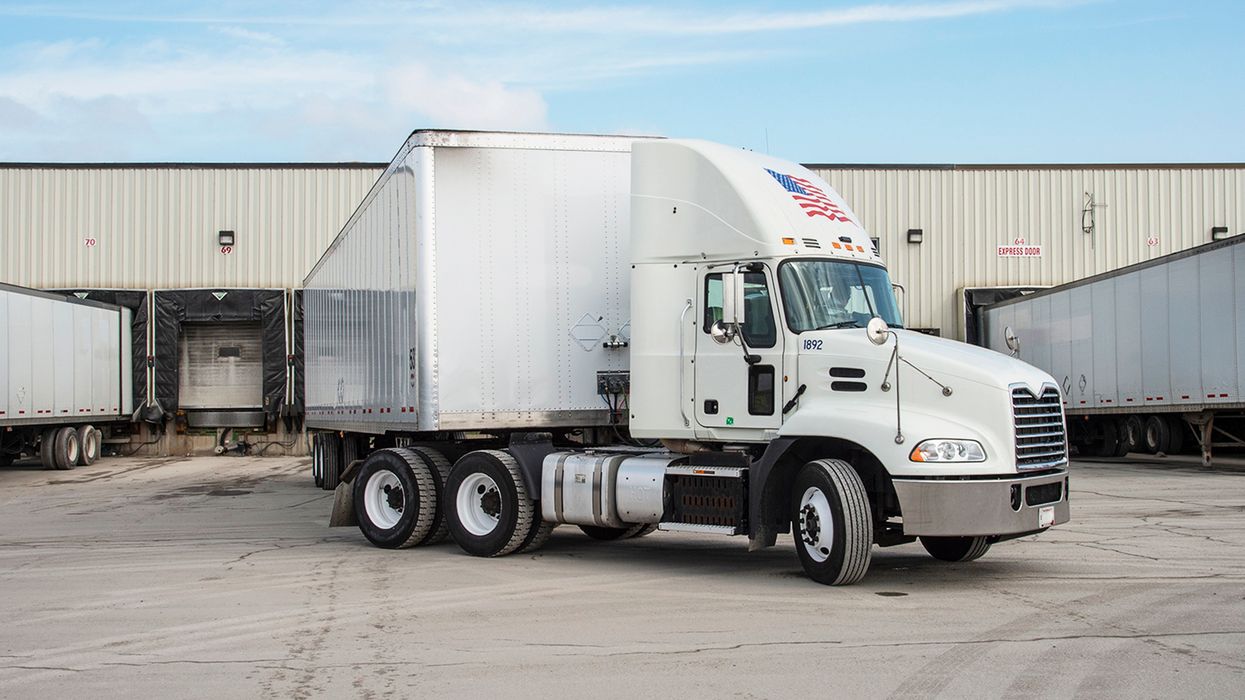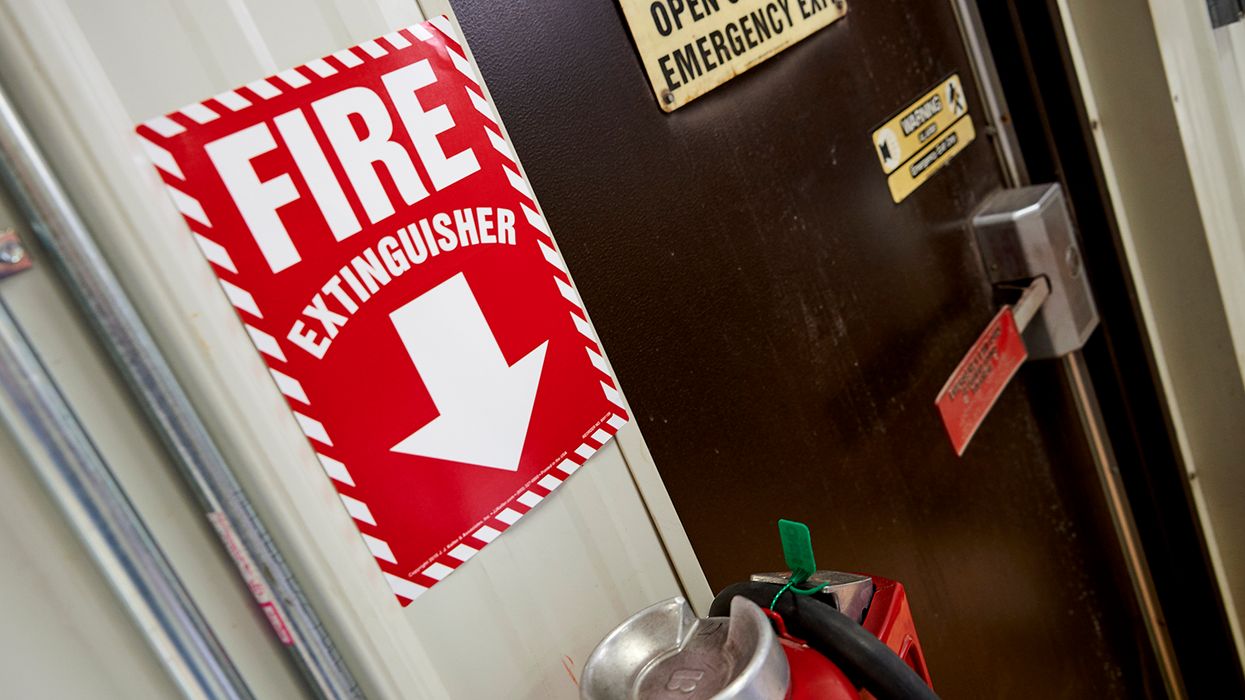Stop! Last chance to prepare for Brake Safety Week
Brake Safety Week, the brake-related inspection blitz conducted annually by the officer-members of the Commercial Vehicle Safety Alliance (CVSA) is scheduled for August 20 to 26, 2023.
During Brake Safety Week, officers that conduct roadside inspections will be doing as many brake inspections as possible. The officers will also emphasize educating drivers about their brakes.
While the inspections will check all brake components (compressor, air hoses, valves, tanks, chambers, adjusters, connection hardware, etc.), the focus this year will be on brake linings and pads.
The linings and pads are the components that contact the brake drum or rotor and create the friction necessary to slow and stop the vehicle. If they are defective or contaminated with grease or oil, the brake involved will not be operating as designed. This will in turn increase the vehicle’s stopping distance, which creates a hazard for the commercial vehicle and the vehicles around it.
Preparing requires two steps – The first involves maintenance
Preparing for Brake Safety Week requires a two-step approach. First, make sure all of your vehicles are current on maintenance. This is because many of brake problems on the road, and therefore the violations that are discovered during roadside inspections, are ones a driver cannot detect during a normal pretrip and post-trip inspection. These include:
- Brake(s) out of adjustment (this is the most common brake violation)
- Brake hose under the vehicle chafing, kinked, or otherwise inadequate
- Brake lining damaged, contaminated, or inadequate
- Mismatched brake chambers or adjusters
When the vehicle is in for maintenance, the technician should visually inspect all brake components, check brake adjustment, and test the system for leaks and function (low air alarm activation, button pop out, etc.).
The driver component
The second step is reminding your drivers to conduct the required daily inspections and to pay close attention to the brakes. Part of this will involve instructing drivers on what to look for on the brake components they can see. This includes:
- Brake hoses that are rubbing,
- Damaged or loose brake chambers,
- Slack adjusters that are being pushed too far,
- Missing connecting hardware, and
- Oil or grease on the inside of the hub or tire.
Drivers should also be reminded to conduct system checks regularly. A driver system check includes checking for leaks, low air alarm function, button pop out, and parking brake and service brake function.
Key to remember: If you have vehicles that are not current on maintenance, or you need to remind your drivers to conduct proper inspection, there is still time to get it done.

